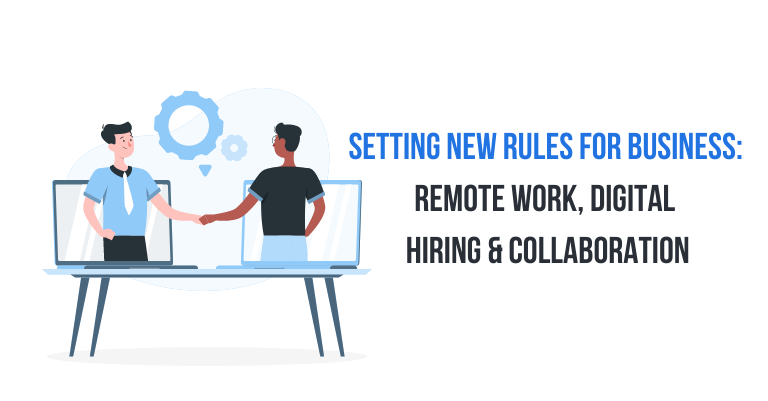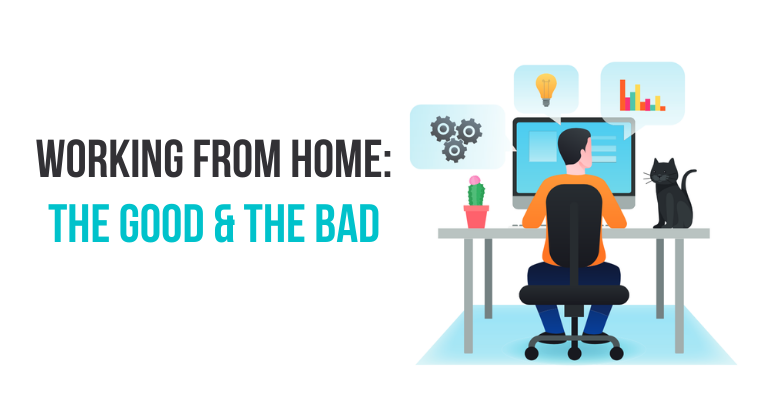
Business Continuity Plan: Business Checklists While Preparing For Uncertainties
Posted On: March 20, 2020
While the World Health Organisation declared COVID-19 as a pandemic outbreak, the numbers are still growing. As we write this, almost 1,61,715 cases in 150 countries have been reported to WHO. While most of those infected have been recovering, the numbers reported worldwide as well as nationally continue to rise. Not only has the COVID-19 outbreak disrupted daily life and travel, but it has also forced businesses to step back and take all possible measures for employee welfare and business continuity.
Expect the best, plan for the worst and prepare to be surprised. – Denis Waitley, American Author
According to the US Department of Labour, Occupational Safety & Health Administration, as much as 40% of a workforce could be affected by a pandemic. Among the many implications and responsibilities for businesses, in the event of a pandemic would be high rates of absenteeism, disruption to supply-chains, disruption to business travel, controlling the risk of infection in the workplace and a fall in demand for the human resource would have to be accounted for as well. A company’s future depends on its people and processes. Being able to handle such situations effectively has a significant impact on the company’s reputation and market value.
Many corporations have reacted to the need for a business continuity plan, but some are yet to respond to this threat. Here’s all you need to ensure the operational viability of your business
Business Continuity Plan
Business continuity is an organization’s ability to ensure operations and core business functions are not severely impacted by a disaster or unplanned incident that takes critical systems offline. A healthy workforce is an organization’s most valuable asset. A pandemic may incapacitate some employees and result in other employees being quarantined. This could result in a major disruption to normal operations. It is imperative to protect your workforce, supply chain, and resources in order to ensure its continued productivity. The organization should verify they have the tools, technology, capacity, and security measures in place to support a large remote workforce. It is critical to establish a strategy that enables employees to continue to function without any risk. Ensure employees can effectively work from home. Also determine the priorities and the minimum staffing requirements to support these priorities, in case of functioning with a significantly reduced workforce.
Steps to building a business continuity plan
-
Form the Business Continuity Management team.
-
Conduct a business impact analysis.
-
Identify resources needed with a gap analysis.
-
Explore and implement recovery strategies.
Business Continuity Checklists
Employee awareness:
The fundamental duty of the Human Resource department is to make employees understand the potential threat of viral infection, such as this one. Employees are the greatest asset of any organization. It is crucial that each and every employee should know what to do, whether for their own personal well-being or those around them. Without proper guidance, training and open lines of communication, the workplace can be susceptible to hysteria and panic.
HR teams should prepare a ready-to-refer instructional guide and educate teams about prevention. Sticking posters on the wall, emails, chat groups, town hall training, infographics, videos, and any mode of media that could help to effectively communicate the message to all employees. As the chronology of any epidemic shrouded in myths, the information should be credible, clear and from verified sources.
But it might not be possible for the work which is location-dependent. In that case, the CDC has laid out ways to avoid viral infections by using non-invasive implements such as face masks, alcohol-based hand sanitizers, and maintaining good personal hygiene.
Software and cloud-based solutions for business continuity:
The organizations are building infrastructure to ensure ‘business as usual’ much easier for the employees. With chat platforms, project management dashboards and other platforms that are online or on the cloud, helping employees to stay in touch with the office work.
The organizations should subscribe to platforms that allow teams to collaborate and communicate effectively. Meetings can be conducted over real-time video calling and flexible work timings that allow employees to decide working hours for themselves.
In times like these, a business must understand the requirements of digital transformation to continue the workflow and ensure no compromise on customer experience. A knowledge management system comes into play to serve customer requirements. In cases of the heavy call flow with fewer agents in customer support, automated chatbots, FAQs, picture guides, video tutorials are really useful to the customer to help the purpose. These tools prevent customers from waiting in the queue for resolutions and improves NPS score and customer satisfaction in the time of emergencies as well.
That is why 70% of customers now expect a company’s website to include a self-service application. These are also useful for the training of non-specialist and new agents to manage the call flow in a crisis like this. In any circumstance, the organizations will remain equipped with all the measures to undertake to minimize business loss and maintain business continuity.
Work from anywhere :
The organizations are becoming result-driven. In the time of global crisis as well companies do not want to lose that status. Through the implementation of flexible working, arrangements eliminate the possibility of transmission in office and during commutes as well. Smart solutions have made it easier for employees to stay connected with the continuous workflow. A Work From Anywhere platform is useful for business continuity in times of natural disasters or fear and risk of infections. Employees can conduct their work remotely, work from home or anywhere by taking the appropriate safety measures.
Nearly 80 million jobs in the US economy are at high or moderate risk today. The organizations want their employees to be safe and be able to participate in regular office work. There are several platforms serving this purpose for organizations big and small. Even in regular situations, According to research from Werk, 50% of employees would consider taking a new job if it offered more flexibility.
Along with improving retention and talent acquisition, flexible work can greatly reduce a company’s real estate costs with its flexible work program due to reduced office space requirements. For example, Dell has saved a very significant impact on economic activity d an average of $12 million a year using this method. Also, the platforms provide data safety and increase the productivity of employees without being present in the office.
HR initiatives :
In the situation of an outbreak of a pandemic, HR departments must take desperate measures. It is mandatory to keep the employees safe and make the office ambiance a little less worrying. Particularly for COVID-19, employees that are suspected of being sick, or start feeling ill during the day, especially those that have been traveling, calling and notifying health authorities should be a priority.
Uncertainty and fear are productivity killers. All the information regarding COVID-19 must be available in the office. Frequent updates are key. Having a helpline or online space dedicated to the same helps too. This may conclude FAQs, informative articles about the situation or any other crisis employees are facing or worried about.
Conclusion
The employees are the backbone of an organization, in order to protect them precautions are imperative. The organizations should be up on their toes to handle the situation. It’s always a good idea to test your business continuity plan to make sure it is effective. Observe results and make recommendations for improvement accordingly. To maintain business continuity, it is pivotal to take preventive measures. As a result, it builds confidence among the employees. They stay focused and do business as usual even in a situation of Pandemic outbreak.



